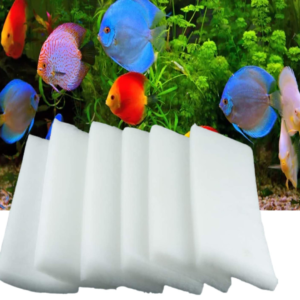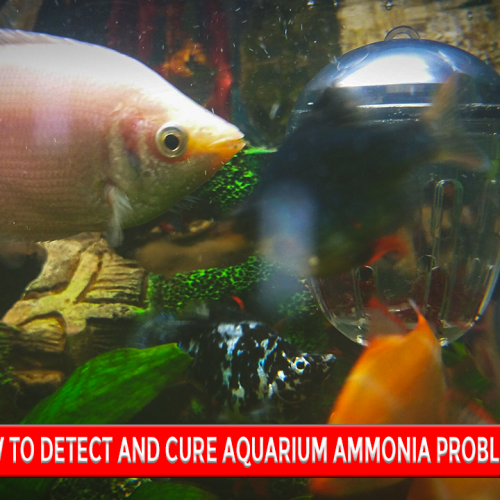Aquarium Filtration can be achieved by removing physical, chemical, and biological impurities from water. There are three type of filtration: mechanical, chemical and biological. The basic principle is to imitate the natural arrangement of lakes, rivers, and oceans, which have water in motion and an environment in equilibrium, supported by plant and microbe natural filters. With the use of a closed aquarium, a filter system is required to preserve the water and the good health of the inhabitants.
Why is Aquarium Filtration Important?
Filtration is one of the most important factors in aquariums for the following reasons:
- Removal of Wastes: Fish generate wastes. Any unused food will decay to the effect of cumulative ammonia among other harmful substances. Filters act in removing these wastes; thus, maintaining water quality.
- Keeps Water Crystal Clear: A good filter will remove algae and other debris floating in an aquarium’s water to keep an aquarium looking healthy and aesthetically pleasing.
- Supports Healthy Bacteria: Many filters allow good bacteria to stick to them. These bacteria go about their duty by breaking down ammonia and nitrite toxins using the nitrogen cycle.
- Ecosystem Balances: Filtration contains evils within control, therefore providing a stable environment that allows the fish and plants to continue living together.
Types of Aquarium Filtration
The three main types of filtrations are used in the aquarium and target a different aspect of water quality:
1. Mechanical Filtration
 Mechanical filtration removes particles and debris physically from the water. This is made possible by passing the water through a filter medium, either in the form of foam, sponge, or filter pad, which will catch all that solid waste in its passage. Mechanically filtered water will remain sparkling clear and clean as long as the filter is adequately maintained. For this reason, it is important to wash the mechanical filter from time to time.
Mechanical filtration removes particles and debris physically from the water. This is made possible by passing the water through a filter medium, either in the form of foam, sponge, or filter pad, which will catch all that solid waste in its passage. Mechanically filtered water will remain sparkling clear and clean as long as the filter is adequately maintained. For this reason, it is important to wash the mechanical filter from time to time.
2. Chemical Filtration
 Chemical Filtration: This process utilizes the use of filter media for removing dissolved impurities and toxins present in the water. The most common media used are activated carbons, which absorb chlorine, tannins, and medicines. There are also other specialized media applied either for phosphate level control or to remove ammonia.
Chemical Filtration: This process utilizes the use of filter media for removing dissolved impurities and toxins present in the water. The most common media used are activated carbons, which absorb chlorine, tannins, and medicines. There are also other specialized media applied either for phosphate level control or to remove ammonia.
3. Biological Filtration
 While there are many critical elements in maintaining a sound aquarium, biological filtration is essential; the aquarium develops beneficial bacteria that convert the dangerous ammonia into nitrite and then to the less pathogenic nitrate through the nitrogen cycle. Nitrogen cycle occurs in filter media with a very high surface area, such as bio-balls, ceramic rings, or commercial sponges.
While there are many critical elements in maintaining a sound aquarium, biological filtration is essential; the aquarium develops beneficial bacteria that convert the dangerous ammonia into nitrite and then to the less pathogenic nitrate through the nitrogen cycle. Nitrogen cycle occurs in filter media with a very high surface area, such as bio-balls, ceramic rings, or commercial sponges.
Common Types of Aquarium Filters
There are many styles of aquarium filters, and each has its own unique features and benefits:
- Hang-on-Back (HOB) Filters: These hang off the back of the aquarium using mechanical, chemical, and biological filtration. It is very easy to attach to an aquarium and maintain, hence the popularity for a first-time owner.
- Canister Filters: Typically located outside the tank, canister filters ensure superior flow on larger tanks. They provide good mechanical, chemical, and biological filtration. However, it might be a little more troublesome to set up.
- Internal Filters: Internal filters are housed inside the aquarium and would best be used on very small tanks or a secondary filter. These normally focus more on mechanical and biological filtration.
- Sponge Filters: Suitable for breeding tanks and shrimp aquariums because filtration is applied softly without harming fragile creatures. It mainly offers biological as well as mechanical filtration.
- Under gravel Filters: These are beneath the substrate; that type of filters suck the water through the gravel, offering biological filtration. They may not be highly efficient in using mechanical filtration but are often run with other filters.
How to Choose the Right Aquarium Filter
There are several factors on which the right filter depends:
- Size of the tank: Big tanks require filters that can easily pump and circulate enough water. For big tanks, a canister filter is the best while HOB for small tanks.
- Fish and Inhabitants: For example, if you have a species that produces much waste, such as goldfish or cichlids, a more intense filtration system will be needed. Picky species, such as shrimp, may prefer a delicate sponge filter.
- Filter Maintenance Some filters are easier to maintain than others. Take one that fits your schedule in cleaning and filter replacement media.
- Combinations of Filtration. For ultimate results, opt for the filter that allows for mechanical, chemical, and biological filtration.
Conclusion:
Filtering the aquarium is one of the very vital aspects of keeping a healthy and thriving aquatic environment. Understanding the types of filtrations that should be used and therefore how to choose the filter that best suits your needs makes sure that your fish, plants, and other aquatic inhabitants live in a safe and well-balanced environment. Do you give your aquarium the right amount of filtration? Not to mention the great investment made when a quality filter makes all the difference in the health and beauty of your tank.
FAQs (frequently-asked questions)
More important than the frequency of cleaning, however, are the type of filter and tank size. Mechenical filter media should at least be flushed once every 2 to 4 weeks. Do not clean biological media too often as this will upset the good bacteria living in the filter.
On a personal note, it is possible to raise an aquarium without a filter. It merely requires changing water very frequently while assiduously monitoring the quality of that water. Filters make it easier to maintain, and it is easier to provide a stable aquatic environment for the fish.
It does not always need chemical filtration but is useful sometimes. For example, you can remove some specific contaminants. You would want to filter it again after medication use, or if some driftwood leaves tannins.




